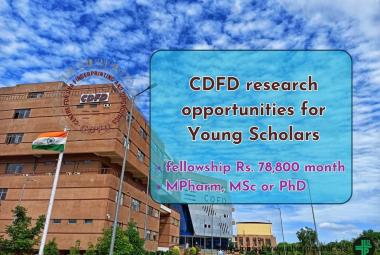ABOUT AUTHOR:
Bhimavarapu Ramya Reddy
Department of Pharmaceutical Analysis,
A.M Reddy Memorial College of Pharmacy, Narasaraopet,
Guntur, Andhra Pradesh, India.
ramyareddy.bh@gmail.com
ABSTRACT:
One of the major challenges facing the pharmaceutical industry today is to increase the productivity, cost effective, ultimately developing new therapies that increases the human health. In order to achieve these challenges, new hyphenated analytical techniques has been employed to perform experiments in less span of time with high quality. During last decade, quantification of low molecular weight drugs by using LC-MS/MS in biological fluids is common procedure in many clinical and preclinical laboratories. Also it plays significant role in the evaluation and interpretation of bioequivalence, pharmacokinetic, and toxicokinetic studies. This overview highlights a number of issues involving “small molecule drugs”, bioanalytical liquid Chromatography –tandem mass spectrometry, which are frequently encountered during assay development.
REFERENCE ID: PHARMATUTOR-ART-1792
INTRODUCTION:
Bioanalytical methods are widely used to quantitate drugs and their metabolites in physiological matrices, and the methods could be applied to studies in areas of human clinical pharmacology and nonhuman pharmacology/toxicology. Bioanalytical method employed for the quantitative determination of drugs and their metabolites in biological fluids, plays a significant role in the evaluation and interpretation of bioequivalence, pharmacokinetic (PK), and toxicokinetic studies. The major bioanalytical services are method development, method validation and sample analysis.
Whatever way the analysis is done it must be checked.i.e it must be validated. Each step in the method must be investigated to determine the extent to which environment, matrix or procedural variables can effect the estimation of analyte in the matrix from the time of collection up to the time of analysis.
Both HPLC and LCMS-MS can be used for the bioanalysis of drugs in plasma. Each of the instruments has its own merits and demerits. HPLC coupled with UV, PDA or fluorescence detector can be used for estimation of many compounds but it does not give the high sensitivity as required by some of the potent, low dose drugs and lacks selectivity. The mainadvantages of LCMS-MS include low detectionlimits, the ability to generate structuralinformation, the requirement of minimalsample treatment and the possibility to cover awide range of analytes differing in their polarities. Despite their high sensitivity and selectivity LC/MS/MS instruments are limited to some extent due to matrix-induced differences in ionization efficiencies and ionsuppression/enhancement effects due tobiological matrix. HPLC coupled with UV, PDA or fluorescence detector offers a cost effective bioanalytical method. Depending on the sensitivity, selectivity and cost effectiveness of the method a choice needs to be made between HPLC AND LCMS-MS.
ESTIMATION OF DRUGS IN BIOLOGICAL FLUIDS:
The choice of sampling media is determined largely by the nature of the drug study. For example, drug levels in a clinical pharmacokinetic study demand the use of blood, urine, and possibly saliva. A bioavailability study may require drug level data in blood or urine. Steps involved in the estimation of drugs in biological fluid are collection of the sample, sample treatment and separation of the compound of interest from the matrix and analysis.
EXTRACTION PROCEDURES FOR DRUGS AND METABOLITES FROM BIOLOGIC SAMPLES:
Sample preparation prior to chromatographic separation there are three major objectives
1. The dissolution of analyte in suitable solvent.
2. Removal of interfering compound as possible.
3. Preconcentration of the analyte.
Different Types Of Extraction Technique Are:
A. Liquid-Liquid Extraction:
Liquid-liquid extraction is useful for separating analytes from interferences by partitioning the sample between two immiscible liquids or phases. One phase in LLE often is aqueous and second phase an organic solvent. More hydrophilic compounds prefer the polar aqueous phase; whereas more hydrophobic compounds will be found mainly in the organic solvents. Analyte extracted into the organic phase are easily recovered by evaporation of the solvent, while analytes extracted in to the aqueous phase can often be injected directly on to a reversed-phase column. The technique is simple, rapid and has relatively small cost factor per sample when compared to others. The extraction containing drug can be evaporated to dryness and the residue reconstituted in a smaller volume of a appropriate solvent (preferably mobile phase). Near quantitative recoveries (90%) of most drugs can be obtained through multiple continuous extraction.
b. Solid phase extraction:
Solid phase extraction is the most important technique used in sample pretreatment for HPLC. SPE occur between a solid phase and a liquid phase. SPE is more efficient separation process than LLE. It is easier to obtain a higher recovery of analyte. SPE employs a small plastic disposable column or cartridge, often the barrel of a medical syringe packed with 0.1 to 0.5 g of sorbent. The sorbent is commonly reversed phase material (C18-silica), and a reversed phase SPE (RP-SPE) assembles both LLE and reversed phase HPLC in its separation characteristics. In SPE, a liquid sample is added to the cartridge and wash solvent is selected so that the analyte is either strongly retained (k>>1) or unretained (K=0). When the analyte is strongly retained, interferences are eluted or washed from the cartridge so as to minimize their presence in the final analyte fraction. The analyte is then eluted in a small volume with strong elution solvent, collected, and either (1) injected directly or (2) evaporated to dryness followed by dissolution in the HPLC mobile phase. In the opposite case, where analyte is weakly retained, interferences are strongly held on the cartridge and the analyte is collected for the further treatment.
Advantages of SPE vs. LLE
More complete extraction of the analyte.
More efficient separation of interference from analyte.
Reduced organic solvent consumption
Easier collection of the total analyte Fraction.
More convenient manual procedures
Removal of particulates
More easily automated
c. Precipitation method
Protein precipitation is the simple method of extraction as compared to the LLE and SPE. This can be carried out by using the suitable organic solvents which has good solubility of the analyte and protein precipitating properties. Acetonitrile is the first choice of solvent for protein precipitation due to its complete precipitation of proteins and methanol is the second choice of organic precipitant provided the solubility of the analyte in these solvents. After protein precipitation the supernatant obtained can be injected directly in to the HPLC or it can be evaporated and reconstituted with the mobile phase
METHOD DEVELOPMENT:
Methods for analyzing drugs by HPLC and LCMS-MS can be developed, provided one has knowledge about the nature of the sample, namely, its molecular weight, polarity, ionic character, pKa values and the solubility parameter.
General conditions to initiate HPLC method Development:
Method development starts with literature survey of the molecule in which we find the nature of the molecule its pKa, solubility, molecular weight etc. Either isocratic or gradient mode may be used to determine the initial conditions of the separation. Depending on the number of active components to be resolved or separated, the mode of run can be determined. If the number of components is large or the pKa values of components are wide apart then gradient mode is preferred over isocratic mode.
In general, one begins with reversed phase chromatography, when the compounds are hydrophilic in nature with many polar groups and are water soluble. The organic phase concentration required for the mobile phase can be estimated by gradient elution method. For aqueous sample mixtures, the best way to start is with gradient reversed phase chromatography.
Selection of Mobile phase:
If the sample contains ionic or ionizable compounds, then use of a buffered mobile phase to ensure reproducible results. Under unfavorable circumstances, pH changes as little as 0.1 pH units can have a significant effect on the separation. On the other hand properly used buffer allows controlling the pH easily. Buffer works best at the pKa of its acid. At this pH, the concentration of the acidic form and the basic form of the buffering species is equal, and the buffering capacity is maximum.
For LCMS-MS ammonium acetate and formate are suitable for buffer mobile phase as they are volatile in nature; usually 2-10mM concentration is adequate but concentration upto 50mM can be used . Ammonium adducts can be frequently seen in positive ion mode and formate or acetate ions adduct in negative ion mode. Basic compound will usually show enhanced signal by lowering pH of mobile phase in LC/MS/MS.
Role of pH:
pH is another factor in the resolution that will affect the selectivity of the separation in reversed-phase HPLC. Selecting the proper buffer pH is necessary to reproducible separation of ionizable compounds by Reversed-Phase HPLC. Selecting an improper pH for ionizables analyte often leads to asymmetric peaks that are broad, tail, split, or shoulder. Sharp, symmetrical peaks are necessary in quantitative analysis in order to achieve low detection limits, low Relative Standard Deviation (RSD) between injections, and reproducible retention times.
Role of Buffer:
In Reverse-Phase liquid chromatography mobile phase pH values are usually between 2.0 and 7.5. Buffers are needed when an analyte is ionizable under Reverse-Phase conditions or the sample solution is outside this pH range.
If the analyte contain only amine functional groups Buffer selection is easier. Most amines will be in cationic form at pH value less than 9.0, so any buffer effective at pH 7.0 or lower will work.
Selection of Column:
The HPLC column is the heart of the method, critical performing the separation. The column must possess the selectivity, efficiency and reproducibility to provide good separation. Commonly used reversed phase columns are C18 (octadecyl silane,), C8 (octyl silane,) phenyl and cyano. They are chemically different bonded phases and demonstrate significant changes in the selectivity using the same mobile phase.
It is also advantageous to consider the column internal diameter, many laboratories use 4.6mm ID as standard, but it is worth considering use of 4mm ID column as an alternative. Selecting an appropriate stationary phase can also help to improve the efficiency of method development.
Role of temperature:
Temperature variations over the course of a day have quite significant effect on HPLC separations. This can even occur in air conditioned rooms. While temperature is a variable that can affect the selectivity, its effect is relatively small. Also retention time generally decreases with an increase in temperature for neutral compounds but less dramatically for partially ionized analytes.
Role of Flow rate
Flow rate, more for isocratic than gradient separation, can sometimes be useful and readily utilized to increase the resolution, although its effect is very modest. The slower flow rate will also decrease the column back pressure. The disadvantage is that when flow rate is decreased, to increase the resolution slightly, there is a corresponding increase in the run time.
Selection of Internal Standard
A compound added to a sample in known concentration to facilitate the qualitative identification and/or quantitative determination of the sample components. The best internal standard is an isotopically labeled version of the molecule you want to quantify. An isotopically labeled internal standard will have a similar extraction recovery, ionization response in ESI mass spectrometry, and a similar chromatographic retention time. Often it is difficult to procure an isotopically similar compound than a compound with similar characteristics to that of analyte is chosen.
Steps Involved in LCMS-MS Method Development:
Method validation:
Selective and sensitive analytical methods for the quantitative evaluation of drug and their metabolites are critical for the successful conduct of preclinical, biopharmaceutical and clinical pharmacology studies. Bioanalytical method validation includes all the procedures that demonstrate that a particular method used for quantitative measurement of analytes in a given biological matrix such as blood, plasma, serum and urine are reliable and reproducible for the intended use.
The process by which a specific bioanalytical method is developed, validated and used in routine sample analysis can be divided into
1. Reference standard preparation for calibration curve
2. Bioanalytical method, development and establishment of assay procedure
3. Application of validated bioanalytical method to routine drug analysis and acceptance criteria for the analytical run/batch.
Types of method validation
A. Full Validation
Establishment of all validation parameters to apply to sample analysis for the bioanalytical method for each analyte.
B. Partial Validation
It is modification of already existing validated bioanalytical method; it can range from as little as one intra-assay, accuracy and precision determination to nearly full validation.
C. Cross Validation
Cross validation is a comparison of validation parameters when two or more bioanalytical methods are used to generate data within same study or across different studies.
Fundamental parameters
1. Selectivity
2. Sensitivity
3. Linearity
4. Accuracy
5. Precision
6. Recovery
7. Matrix effect
8. Dilution integrity
9. Stability
Selectivity
Selectivity is defined as, "the ability of an analytical method to differentiate and quantify the analyte in the presence of other components in the sample The definition of selectivity is quite similar to the definition of specificity: "the ability to assess unequivocally the analyte in the presence of components which might be expected to be present . Selectivity is evaluated by injecting extracted blank plasma and comparing with the response of extracted LLOQ samples processed with internal standard. There should be no endogenous peak present within 10% window of the retention time of analyte and an internal standard. If any peak is present at the retention time of analyte, its response should be ≤ 20% of response of an extracted Lower calibration standard i.e. LLOQ standard If any peak is present at the retention time of an internal standard, its response should be ≤ 5% of the response of an extracted internal standard at the concentration to be used in study.
Sensitivity
Sensitivity is measured using Lower Limit Of Quantification (LLOQ) is the lowest concentration of the standard curve that can be measured with acceptable accuracy and precision. The LLOQ should be established using at least five samples independent of standards and determining the co-efficient of variation and appropriate confidence interval. The LLOQ should serve the lowest concentration on the standard curve and should not be confused with limit of detection and low QC sample. The highest standard will define the upper limit of quantification (ULOQ) of an analytical method.
Linearity
The linearity of an analytical procedure is its ability (within a given range) to obtain test results which are directly proportional to the concentration (amount) of analyte in the sample. A calibration curve is the relationship between instrument response and known concentrations of analyte. The matrix based standard curve should consist of a minimum of six standard points, excluding blanks, using single or replicate samples. The standard curve should cover the entire range of expected concentrations. Standard curve fitting is determined by applying the simplest model that adequately describes the concentration response relationship using appropriate weighting and statistical tests for goodness of fit.
Accuracy and Precision
For validation of bioanalytical method, accuracy and precision should be determined using a minimum of five determinations per concentration level (excluding blank samples). The mean value should be within ± 15% of the theoretical value, except at LLOQ, where it should not deviate by more than ± 20%. The precision around the mean value should not exceed 15% of the CV except for LLOQ, where it should not exceed 20% of the CV.
%Nominal (accuracy) = 100 x Mean concentration / Nominal concentration
% CV (precision) = 100 x Standard deviation / Mean
Recovery
An important parameter associated with Bioanalytical methods is recovery. The recovery of an analyte in an assay is defined as, "the detector response obtained from an amount of the analyte added to and extracted from the biological matrix, compared to the detector response obtained for the true concentration of the pure authentic standard.
% Recovery =100 x Mean response of extracted samples / Mean response of unextracted samples
Matrix effect (for LCMS-MS only)
Matrix effect is the effect on an bioanalytical method caused by all other components of the sample except the specific compound to be quantified. It happens due to ion suppression/enhancement by the others ions present in the biological matrix which might get ionized during detection and will give false results. Matrix effect studied by comparing theresponse of extracted samples spiked before extraction with response of the blank matrix sample to which analyte has been added at the same nominal concentration just before injection.Matrix effect is done in LCMS-MS to find out if there is any ion suppression or enhancement effect by the matrix. Process and analyze calibration standards and three sets each of LQC and HQC samples using six different lot of matrix that were post spiked along with internal standard.
Dilution integrity
Dilution integrity is performed in order to check the validity of method incase the sample needs to be diluted during analysis. It is done by spiking analyte working standard in drug free and interference free plasma to get concentration of 2xULOQ. Two and four fold dilution made of the original concentration using screened and pooled plasma and analysed against a fresh calibration curve. The concentration will be calculated using the dilution factor.
Stability
Stability is an extremely important parameter to consider during the Bioanalytical method validation process. Stability is defined as the, "chemical stability of an analyte in a given matrix under specific conditions for given time intervals.
Should the analyte change in any respect, chromatographic behavior could be affected; in turn, this complicates the process of method development.
To reduce the occurrence of changes in the analyte during the method development process, the following activities should be considered:
- determine the short term (up to 6 hrs) stability
- determine the post preparative stability (auto sampler)
- use fresh samples for extraction and freshly prepared stock solutions for matrix spiking
- determine the short term (up to 6 hrs) stability of the spiked extract
- determine the post preparative stability (auto sampler) of the spiked extract
The parameters listed above can greatly aid implementation of the development process and validation process. If selectivity can't be demonstrated, the procedure is not suitable for its' intended purpose. If recovery is inconsistent and the analytes are fractionated after being altered, development of the method would be quite difficult. Under such conditions, characteristics such as accuracy, precision, range, etc. would be most likely be greatly affected.
CONCLUSION
Although it is a good starting point, modeling analytical techniques in bioanalytical method development should not be restricted to pure and neat analyte solutions. Unknown compounds originating from the biological matrix could interfere with the analyte response and should also be taken into account in the modeling process. Also, method development could be performed much more structured and the models could be helpful for future use for trouble shooting purposes. Besides matrix effects affecting the analytical response, other effects could also blur the results. A bioanalytical method which was set up using theoretical models and where matrix effects are taken into account could be considered as a controlled method since the effect of changes in analytical parameters can be predicted quantitatively. Validation of new methods in analytical toxicology is an integral part of quality assurance, accreditation, and publication. For methods used for analysis of rare analytes or in single cases, the number of validation experiments and parameters to be evaluated may be reduced, but a minimum validation is necessary to ensure sufficient quality of the results.
REFERENCES:
1.Strategies & Considerations for Bioanalytical Method Development and Validation Using LCMS / MS - A Review by rahul Sharma, m.pharm-pharmacuetics,lord shiva college of pharmacy,Haryana
2.Hand book of bioanalytical separations, vol 4 ,roger M.Smith.
3.Hogh throughput bioanalytical sample preparation,methods and automation strategies,D.A wells.
4.Handbook of boianalysis and drug metabolism, Gary Evans.
NOW YOU CAN ALSO PUBLISH YOUR ARTICLE ONLINE.
SUBMIT YOUR ARTICLE/PROJECT AT articles@pharmatutor.org
Subscribe to Pharmatutor Alerts by Email
FIND OUT MORE ARTICLES AT OUR DATABASE









